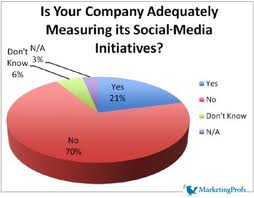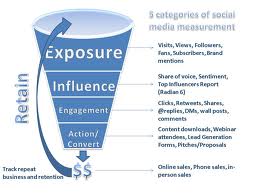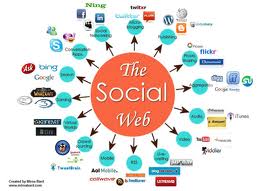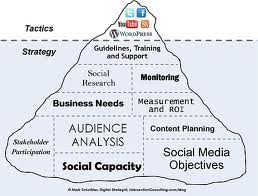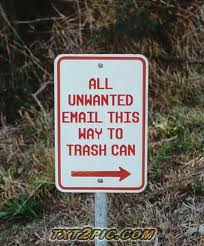 I oftentimes get asked about direct mail as a fundraising vehicle by non-profit friends. My typical response is that direct mail is both an art and a science. I point them to experts like Mal Warwick and Tom Ahern, but they are always surprised when I point them to their own mailbox.
I oftentimes get asked about direct mail as a fundraising vehicle by non-profit friends. My typical response is that direct mail is both an art and a science. I point them to experts like Mal Warwick and Tom Ahern, but they are always surprised when I point them to their own mailbox.
I have always said that the average American can become educated about what works and what doesn’t work when it comes to direct mail if they only pay attention to what is being sent to them, what they are opening (or not opening), and how and what they’re reading (or not reading). It is with this in mind that I’ve decided to focus this week’s blog posts on my personal mailbox.
As you can imagine, I get a lot of fundraising appeals — local non-profits, national charities, advocacy groups, and politicians. Today, we’re taking a closer look at my new BFF — Michelle Obama — who can’t seem to stop sending me mail.
 Let’s open one of the three letters that my household recently received and see what we have:
Let’s open one of the three letters that my household recently received and see what we have:
It is a three page letter written on double-sided paper that looks like Michelle’s personal stationary (which it obviously isn’t).
I read the salutation first. “Dear Mr. Anderson”. I immediately frown and think to myself “why is she calling ‘mister’ when I am younger than her .” Nevertheless, I trudge on and keep reading.
I read the first paragraph. It is two sentences long and doesn’t capture my attention. It says something about doctor bills and mortgages and blah blah blah.
So, I start skimming and notice that she uses my name a lot throughout the body of letter. Here are a few examples:
- “Erik, I’m writing to ask you to . . .”
- “Erik, that is why he is challenging us to think . . .”
- “Erik, that is what’s at stake in 2012.”
- “And Erik, we’re also counting on you to . . .”
I also notice that there is a lot of emotion and values language laced throughout the letter. The following are just a few of the words and phrases that catch my attention as I skim:
- persevere
- struggles
- fundamental American promise
- my brother’s keeper
- sustained by the relationships we build
 Phew . . . that was a lot of skimming. In approximately three to five seconds, as I worked my way from the salutation to the signature, I was able to pick out those key words and phrases. I now see that Michelle (or should I say “Mrs. Obama” since we obviously have a formal relationship) has signed the letter.
Phew . . . that was a lot of skimming. In approximately three to five seconds, as I worked my way from the salutation to the signature, I was able to pick out those key words and phrases. I now see that Michelle (or should I say “Mrs. Obama” since we obviously have a formal relationship) has signed the letter.
Yes, it was a machine signature, but it isn’t a script font. It really looks like a signature. Thank goodness for autopen machine technology because nothing kills a nice, warm, emotional letter like a script font signature.
Just when I’m done and ready to shred the letter, Ron Popeil screams out from the bottom of the letter, “But wait, there’s more!”
That’s right. There is a postscript, and I find myself reading the whole thing. It contains two short paragraphs, and the sentences are super short. The verbiage is very emotional, and it is hard not get drawn in. Here is exactly what it said:
P.S. I’m not going to kid you. This journey is going to be long. And it’s going to be hard. But the truth is, that’s how change always happens in this country. We know in our hearts that if we keep fighting the good fight, doing what we know is right, then we eventually get there. Because we always do.
As Barack has said many times, “Ordinary people can do extraordinary things. That’s what our campaign is all about. Now the obstacles are even taller and the stakes are even higher — which is exactly why Barack and I need you more than ever. Thank you.
Sigh … the hook is set, and I turn back to page one. I start reading and stop skimming.
 While there is a lot more to learn about direct mail (and we will talk about some of it over the next few days), we did learn the following valuable lessons from reading just one professionally written direct mail fundraising appeal:
While there is a lot more to learn about direct mail (and we will talk about some of it over the next few days), we did learn the following valuable lessons from reading just one professionally written direct mail fundraising appeal:
- Many people skim direct mail.
- The first thing people read and pass judgement on is the salutation (isn’t that right, Mrs. Obama?)
- People will pick-up key words and phrases as they quickly work their way from salutation to signature.
- Good letters appear are very personal, emotional and focused on action and engagement. They are written in a first person voice, and passive voice language is avoided.
- A signature (even if scanned) is always better than a script font, but a real signature is the icing on the cake for any personal letter.
- The postscript can be the key to the entire letter. Everyone seems to read it, and a good one sucks the reader back in and can send them back to the beginning.
Tune in again tomorrow and we’ll do something similar with another piece of mail. In the meantime, I encourage you to go to your mailbox and go through this same exercise. In no time, you will feel much better about what you’re trying to do with your non-profit organization’s direct mail program.
How do you read junk mail . . . errrr, I mean . . . direct mail? Does your agency have a direct mail program? What does it look like? What have been your successes? What are your challenges? Please use the comment box below to share your thoughts and questions.
Here’s to your health!
Erik Anderson
Founder & President, The Healthy Non-Profit LLC
www.thehealthynonprofit.com
erik@thehealthynonprofit.com
http://twitter.com/#!/eanderson847
http://www.facebook.com/eanderson847
http://www.linkedin.com/in/erikanderson847

